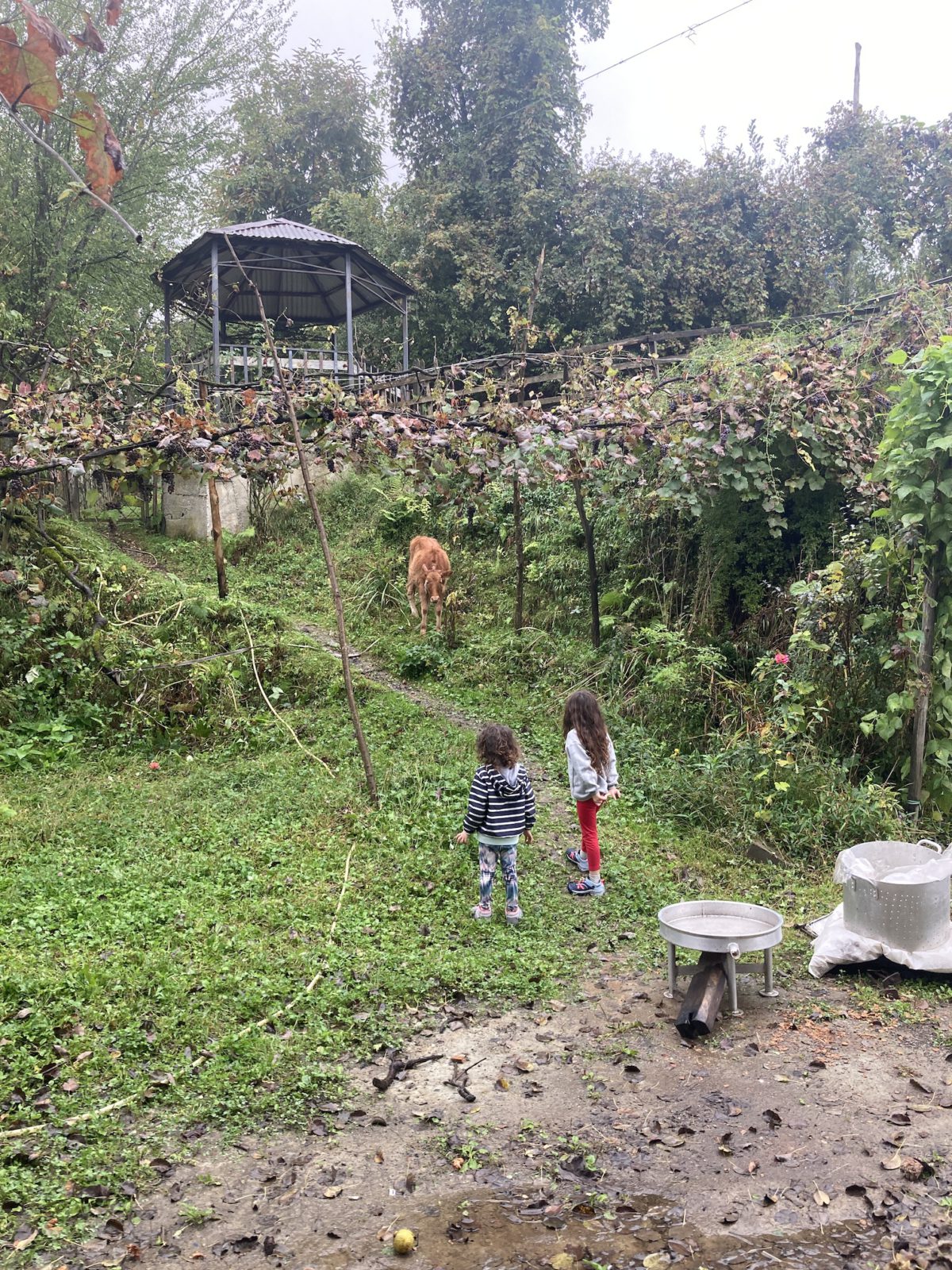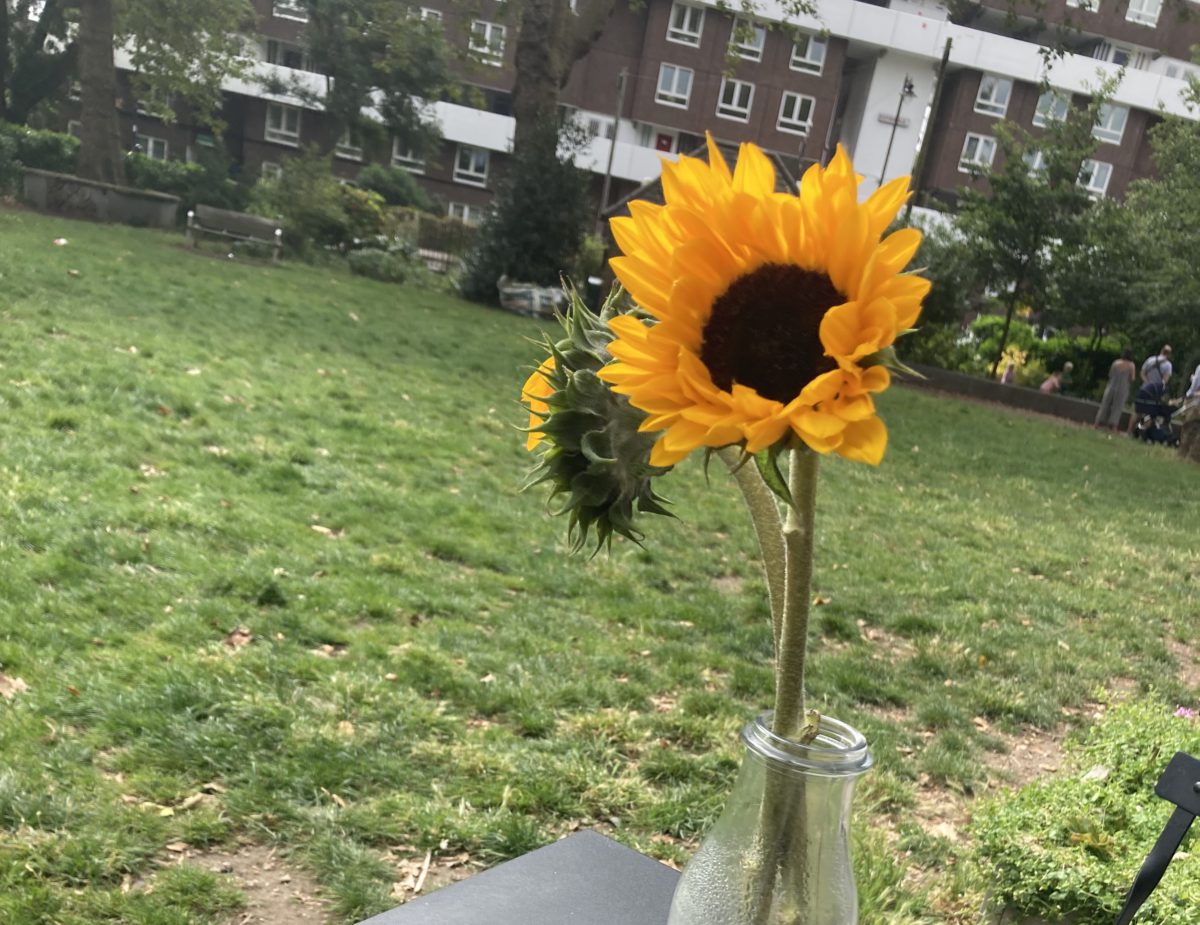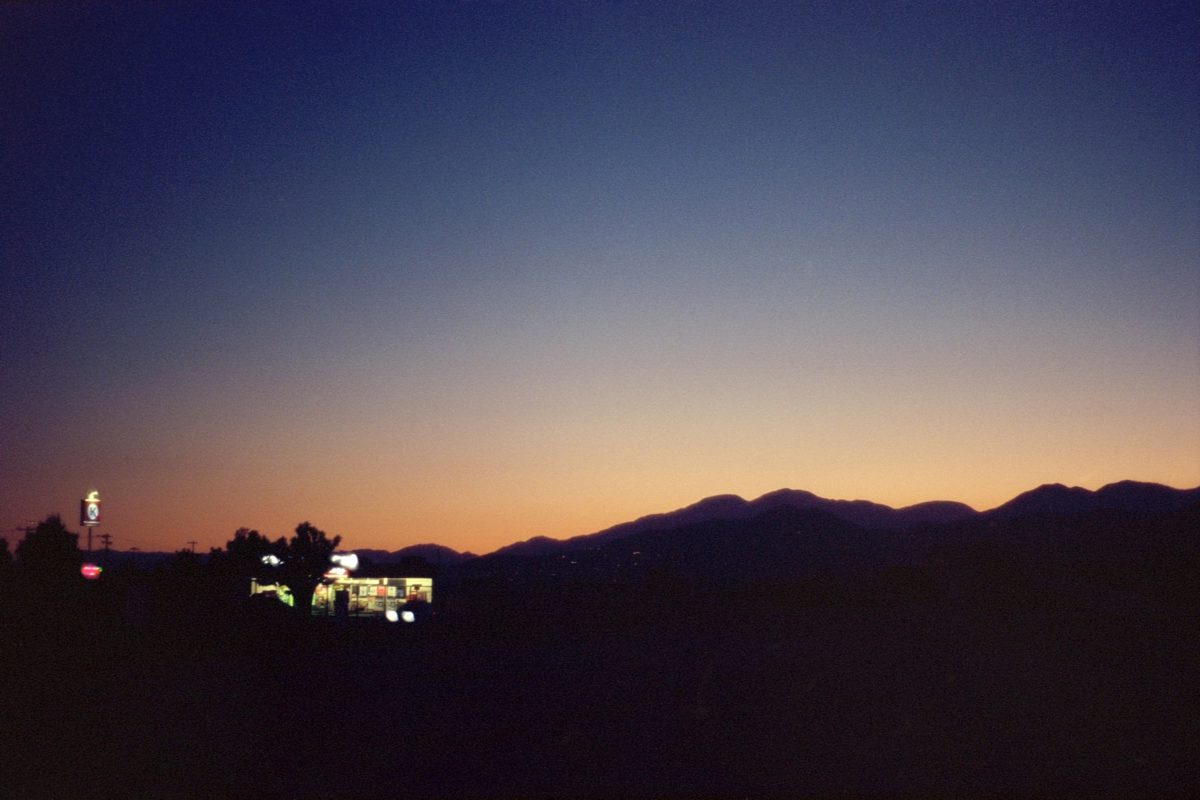
The first thing you think when you walk into Pappy and Harriet’s, after a winding, desolate drive up Pioneertown Road, is: Where the hell did all these beautiful people come from? And where did they all get their flat-brimmed cowboy hats and brand-new boots? And what about this guy in an octopus-print wizard’s robe?
Because Pioneertown itself—an unincorporated, Western-themed community of less than five hundred—couldn’t fill this storied venue. Nor would its residents want to. People move to Pioneertown to get away, not to mingle.
What about this girl with the subtle nose job? What about this couple discussing stock options? And what about this guy selling individually-wrapped MDMA and psilocybin chocolates?
Where did they all come from?
The obvious answer, of course, is Los Angeles—the same place as your correspondent. They’ve driven hours for a sold-out, Saturday night edition of André 3000’s New Blue Sun Live. Dozens of tightly-clutched cans of Liquid Death attest to that. And after a months-long postponement, they’re ready for the show.
But the more complicated answer is: they came from California.
So, when you find him in the high desert, playing 90-minute sets of free jazz and speaking in tongues, it’s also hard not to ask: What the hell happened?
When André 3000 released A New Blue Sun (2023), it left many listeners baffled. At least, it baffled those that hadn’t noticed the artist dropping in on Prospect Park drum circles and practicing his flute in airports over the past several years. Not to say the album’s reviews were unfavorable—critics from Rolling Stone to Pitchfork called it “a breath of fresh incense,” and some of the year’s “best new music.”
But it was a change of pace for the iconoclastic, once-and-future rapper. As one half of the hip-hop duo OutKast, André 3000 is the rare musician whose cultural clout hasn’t faded in his time away from the mic. If anything, the group’s inimitable sound still informs the dirty south rap style it both defined and transcended.
Born in Atlanta, André 3000 (né Benjamin) met OutKast’s other half—Antwan “Big Boi” Patton—in 1992. They were both sixteen, and in tenth grade. Two years later, they’d gone platinum with their debut album, Southernplayalisticadillacmuzik, and only kept going up. Their seminal double release—2003’s Speakerboxxx/The Love Below—remains the best-selling hip-hop record of all time.
In your correspondent’s first year of high school, it was impossible to turn on the radio without hearing one of its singles. “Hey Ya!” and “Roses” were so inescapable that no car ride was free from exposure. In less than a decade, OutKast—and especially André 3000—had gone from curiosities to culture-shifting icons that brought Southern rap into the mainstream. Looking back twenty years later, after what many have called André’s “flute album,” it’s hard to overstate the man’s immense and enduring popularity.
So, when you find him in the high desert, playing 90-minute sets of free jazz and speaking in tongues, it’s also hard not to ask: What the hell happened?
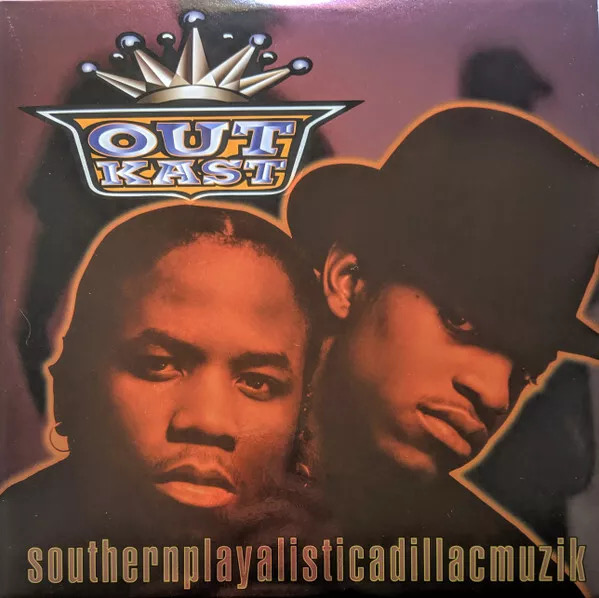
Southernplayalisticadillacmuzik, Arista Records, 1994. 
Speakerboxxx/The Love Below, Arista Records, 2003.
Sometime around the pandemic, André 3000 moved to Los Angeles, dropping four million dollars on a place in Venice Beach. Originally, this was supposed to be a temporary move. A “six-month sort of thing.” Just a little space to get his head sorted out. But, as fate would have it, the artist went to Erewhon.
Angelenos’ obsession with Erewhon—and Lassens, and Bristol Farms, and all manner of virtue-signaling grocers and superfood suppliers—borders on the absurd. It’s also low-hanging, organic, cruelty-free, non-GMO fruit for the city’s critics.
Not long after your correspondent moved to LA, a date pointed out an “amazing” local chain, explaining that its name was “nowhere” spelled backwards. After glancing at its sign, your correspondent told her that “Erewhon” was an anagram of “nowhere,” rather than its reverse. There weren’t many dates after that.
André’s experience was more fortuitous. He ran into Carlos Niño—a producer, percussionist, and elder statesman of the LA experimental and healing music scenes—and hit it off. Hours later, he was at an Alice Coltrane tribute, flute in-hand, ready to jam. He’d picked up his interest in woodwinds a couple years before, at a breathwork class put on by a professional surfer.
If all of this feels unbearably Californian, that’s because it is. Venice—an aborted resort town and former artists’ enclave—still clings to the tattered shreds of its bohemian credentials: Mid-century Venice Beach played host to Lawrence Lipton’s “Holy Barbarians”—Beat poets and artists who found refuge in the “Slum by the Sea.” Now, it’s a peculiar nexus of designer boutiques, one-bed bungalows, reiki masters, homeless encampments, NIMBYs, yoga studios, “wellness” centers, open-air skateparks, closed-door tech startups, and million-dollar celebrity renovations.
It is, in other words, Californian.
At the live show, you see and hear a lot of flutes (and other wind instruments). There are Mayan flutes, Mesquite flutes, Bolivian flutes, Native American drone flutes, and at least one pan flute. Some are custom flutes, made by Guillermo Martinez at the Silverado-based Quetzalcoatl Music, unique to André 3000. Others are more standard—if such a word can be used for instruments like soprano oboes, Roland Aerophones, and repurposed bird calls.
At times, this can come off like an exhibition of musical memorabilia. André changes instruments every few minutes as the music swells and subsides, looking for sounds that fit the moment. But it works. The performance is mesmerizing, the musicians in sync, and the compositions ethereal—though not too celestial to get lost in. Even if the audience doesn’t know when to clap.
Halfway through, the artist takes some time between songs to introduce the band. He also uses the time to describe this new direction, to answer the unasked questions, as if he feels the need to explain himself. There’s a tension between his Atlanta roots and his Californian dreaming, his lingering Southern accent and his shout-outs to Erehwon (at this point, everyone knows to clap).
The answers to some of these questions can be found with the band itself. There’s Niño—with whom André co-produced the new album—and Deantoni Parks on drums, Nate Mercereau on guitar, and Surya Botofasina on a battery of flanged-out keyboards. And Botofasina may be the key to understanding where New Blue Sun—and all these people in Pioneertown—came from.
New Age is notoriously (and perhaps intentionally) difficult to define. If your correspondent were to try, it’s a kind of holistic, pay-as-you-go, self-centered pantheism. A worldview in which no one can tell you what to believe, but a few thousand dollars and a shaman in Hawaii or Big Sur might point you in the right direction.
In interviews with GQ and NPR, André provides a list of inspirations. The list is fairly predictable: Phillip Glass, Yusuf Lateef, John Coltrane. But Coltrane has a special connection to the project.
Alice Coltrane—John’s wife, and a pioneering jazz musician herself—shared her husband’s religious reverence for music. After his death, she opened the Sai Anantam Ashram in the Santa Monica Mountains. Although it closed in 2017, its website still notes that it was dedicated to “not only Vedic scriptures,” but also “more recent revelations of God.”
(For those not as familiar as your correspondent with what passes for normal on the West Coast: An ashram is a place of spiritual seclusion inspired by Indian religious traditions. While this might sound like a strange way to grow up, it’s surprisingly common in America.)
As it happens, Surya Botofasina was raised on that same ashram.
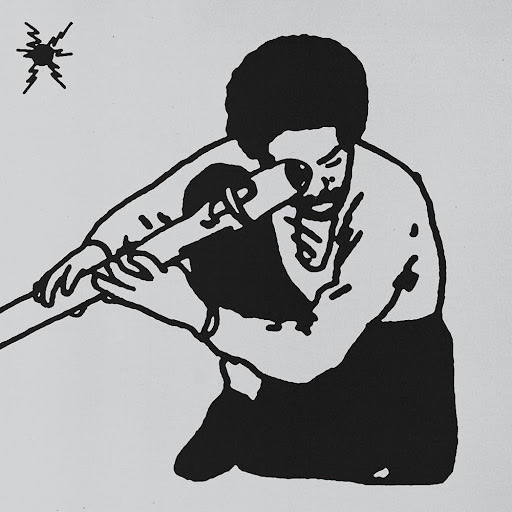
In his Rolling Stone review, Christopher Weingarten calls New Blue Sun “a peak in the decade-long crescendo of hipsterati new age revival.” But this crescendo has been building for much longer than a decade. New Blue Sun’s cultural moment reflects the slow creep of Californian New Age ideas, aesthetics, and practices into mainstream culture.
New Age is notoriously (and perhaps intentionally) difficult to define. If your correspondent were to try, it’s a kind of holistic, pay-as-you-go, self-centered pantheism. A worldview in which no one can tell you what to believe, but a few thousand dollars and a shaman in Hawaii or Big Sur might point you in the right direction. Since the 1970s, it has been the milieu that creative Californians operate in, the water they swim in, the air they breathe. The same can now be said of many Americans. California has quietly invaded the rest of the country.
This is the California of the Esalen Institute, of astrological readings and plant medicines, of self-actualization and transcendental meditation. Of natural wines and light-based therapies. Of Kamasi Washington and Thundercat. This California is both a state and a state of mind. A state where they beatified John Coltrane—but not before declaring him God incarnate first. Where people don’t strive for a better life—they “manifest” one.
Its influence can be seen as far back as OutKast’s third album (1998’s Aquemini). That two Atlanta-based rappers, fresh out of high school, would even think of using star signs to identify themselves shows how deeply New Age ideas permeated American culture.
In the GQ interview, André looks back on OutKast’s success from a Venice Beach laundromat. He remembers their surprise win for “best new rap group” at the 1995 Source Awards.
“Our contemporaries were looking at us crazy. Like, ‘who are y’all? Y’all are from another planet.’ Now the planet is here.”
Your correspondent sometimes refers to California as “another planet,” meaning both its quirky people and its sublime landscapes. Hearing this echoed back from the artist, a few years after his move, feels like confirmation.
Conservatives often decry Hollywood’s control over social narratives. But it is this long-simmering set of beliefs, exported via counter-cultural fads—think crystal-toting yogis and gluten-free chiropractors—that has subtly shifted collective myth-making over the past fifty years. If you check Surya Botofasina’s website, his bio notes that he’s based in New York, but “metaphysically always in his Beloved California.”
Increasingly, this is the metaphysical space many Americans inhabit. When you scratch the surface, New Age is everywhere you look. Mormons rely on essential oils in lieu of medications. Celebrity lifestyle brands hawk plant-based supplements. And insurrectionists like Jacob Chansley—a man most wouldn’t recognize without a painted face and a coyote-tail headdress—promote quantum woo and describe extraterrestrial encounters.
The aliens are here. And they’re Californian.
André 3000 has long understood the importance of presentation, of style, of toying with signifiers and recycling them for his own ends. In his early years, he reinvigorated Afrofuturist fashion–donning shoulder pads and feather boas, golden chaquetillas and catchers’ vests–and moved it squarely into the mainstream of American culture. As much as OutKast defined the turn-of-the-century Atlanta sound, André 3000 set the tone for avant-garde Black fashion.
So, when the artist takes a left turn into new age jazz, you should pay attention to the style. To the set dressing. To the signifiers you can’t quite place. While his own stage presence has mellowed over the years—this June Saturday in the desert he’s wearing all black, a red beanie, and his now-signature Coke bottle glasses—hints of his sense for the surreal, the almost extra-terrestrial, come through in the scenography.
Between the echoing cymbal crescendos, the intrepid bird call solos, and the rustle of palm fronds, you notice what look like heat lamps, pointed at the audience from backstage. Color-changing LEDs ring their shades, slowly pulsing with the music. But there’s something else–something in front of André and the others—that’s been there since before the crowd arrived.
Just off-center, stage left, is a white traffic cone. A half-filled highball glass sits on top. On stage right, a featureless black box projects a laser through the glass, its refracted beam glimmering in the water. In the middle of all this improvisation, there is a very deliberate installation.
The aliens are here. And they’re Californian.
None of this is ever explained, let alone acknowledged. But with an artist like André 3000, you wonder: What does it mean?
Is this the titular New Blue Sun? A focused, coherent, inherently technological form of light, passing through the essential medium of life? And what about the white traffic cone? Even its lack of color feels like it means something.
As the show progresses, the LEDs shift through the spectrum, eventually landing on blue. Backlit by the same color, the laser becomes white. Dust speckles the beam, blown and kicked up from the desert floor.
Is every transmission, every sound wave and song and polarized photon, bound to be disrupted by nature? Is there no such thing as white light—only our biologically-limited perspective of color and its absence?
In his NPR interview, André gives a very New-Agey answer to the question of the title, talking about “new worlds” and “new beings.” But if the music is improvisational, why can’t the meanings be? If the songs are different every time, shouldn’t your interpretations be as well?
In some ways, Pioneertown is the perfect place for New Blue Sun Live. Nearby Joshua Tree has long had a reputation for being “where hippie meets redneck,” where New Age ideas meet the unforgiving glare of the rest of America. It’s no coincidence that the Integratron—a Mecca for SoCal sound baths, steeped in its own New Age mythos—is a twenty-minute drive from Pappy and Harriet’s.
Because, despite the over-representation of LA, there are locals in this crowd. Priced out of LA, many artists and musicians have decamped for the Morongo Basin. Star-seeking restaurants and bars have popped up on Old Woman Springs Road. So, you’re not surprised when you overhear a biker discussing tarot pulls by the bathroom, or when the bartender mentions their rising sign.
In some ways, Pioneertown is the perfect place for New Blue Sun Live. Nearby Joshua Tree has long had a reputation for being “where hippie meets redneck,” where New Age ideas meet the unforgiving glare of the rest of America.
Two people pass out towards the end of the show, with André directing security to the unconscious onlookers. Whether this is from the music or the candied hallucinogens is unclear. The artist, for his part, takes it in stride. After he’s sure the second fainter is alright, he laughs.
“Damn. Ya’ll tryin’ to go to heaven early tonight.”
The audience cheers. People are looking for rapture tonight—including the people on stage. The band radiates a kind of joy in the craft that many high-performing musicians lack. There’s no competition here. Only seeking. Searching for the perfect groove. The perfect vibe. And as André reminds everyone, the vibe will be different every time.
If you go into a New Blue Sun Live show expecting to hear the new album, you’ll be disappointed. This is improvisational. Music for the moment, of the moment, by the moment. And there’s no disappointment in that. Even if you question its motivations. But if you showed up to Pioneertown expecting everything to go according to plan, wolfing down mushroom chocolates and drinking mezcal, wearing a cowboy hat as the stars poke through indigo skies, maybe you deserve disappointment.
At the end of the night, as André takes a bow and skips any pretense of an encore, you look back on the performance for what it was: a handful of talented musicians, jamming in the desert. In this moment, what else can you ask for?



